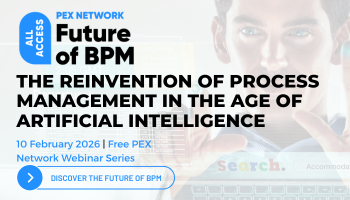Your digital transformation is not doomed to fail
Prioritize data to reverse the fortune of failing change and transformation programs
Add bookmark
Imagine a large organization in the middle of a massive digital transformation. To make much needed improvements, they’ve invested millions in new software, hired top consultants and disrupted their entire workflow. Yet, despite these efforts, the transformation is failing. The IT team is overwhelmed, project timelines have slipped and the promised benefits seem out of reach. Why? Because a crucial element has been overlooked: the data. The vast volumes of data they are trying to migrate are out-of-date, in conflicting formats and managed through a catalogue of thousands of Excel spreadsheets. It is chaos.
This isn't just a story. It’s a reality many organizations face when they embark on big programs of change. It was highlighted in recent research by the UK and Ireland SAP User Group (UKISUG), where a staggering 77 percent of respondents stated that data management presents a significant challenge when moving to SAP S/4HANA. This is not because SAP implementations are much trickier than other major digital transformations, it’s a common hurdle whatever platform or tech you choose to move to.
Join the PEX Network community

Don't miss any news, updates or insider tips from PEX Network by getting them delivered to your inbox. Sign up to our newsletter and join our community of experts.
Learn MoreWhen to address your data
Even when organizations do recognize the value of prioritizing data during a transformation, they often leave it too late. Spurred into action when data issues start to cause real problems, the IT team attempts to rationalize, clean and organize data mid-project. This takes time and focus away from the migration and can massively impact deadlines and cost.
To avoid the pitfalls of poor data management, take a data first approach and address your data early in the transformation process. That’s before you research technologies and vendors, and before you start budgeting and securing funding. Starting with a data focus streamlines the transformation, lowering costs and mitigating risk.
In an ideal world, you’ll be building on your existing data strategy. However, that same UKISUG survey revealed that just 12 percent of businesses have a comprehensive data strategy covering their entire organization. Without a data strategy in place, it’s very likely that data has become out-of-date, inaccurate and siloed. What’s worse, this lack of strategy could mean IT teams don’t know where their priority data is stored and don’t have a clear idea of which data needs to be migrated and which can be pruned or retired.
Nao Anthony, Commonwealth Bank and Tariq Munir, PepsiCo discuss the complexities and challenges of digital transformation
Getting to grips with your data early
It’s easy to say prioritize your data, but what does it really mean? In my experience, the organizations that follow three simple principles tend to have much better and longer-lasting transformation results.
Before the project starts, teams on their way to a successful transformation will:
1. Build a strong foundation: Reduce clutter and start strong by kicking off with a thorough audit of existing data to identify what’s necessary and what can be eliminated.
2. Set objectives: Once IT teams know which data to migrate, quality and accessibility are the priority. They set goals with business outcomes in mind and they consider how they’ll track progress and make changes as the transformation progresses.
3. Introduce and enforce data governance: Robust governance should be easy to follow and should prioritize consistency and accuracy. Include data ownership, quality standards and security protocols so that the right data is migrated in the right formats. It also means that data quality is prioritized beyond migration, which leads to even better long-term outcomes.
My final secret weapon? Involve the C-suite. According to the UKISUG survey, data strategy still tends to fall to the IT team. However, the C-suite relies on that data to succeed – to set direction, make strategic decisions. improve performance and manage risk. Data governance must be in their remit. If they need persuading, explain how data quality directly impacts business results and how bringing them onboard will mean the rest of the organization understands the importance of data quality too.
Adam B Schreiber, Johnson & Johnson, reflects on resilience in change management
It’s not too late
If you’ve already started a transformation project and your data is giving you headaches, don’t despair. Yes, it’s much better to start untangling your data early, but remember that organization I mentioned? The one with thousands of Excel spreadsheets? By shifting to a data-first approach, the IT team managed to turn its project around. The data was streamlined, governance was enforced and the company began to see long lasting benefits of the transformation.
So whatever stage you’re at, prioritizing your data strategy and governance from now can still lead to significant business benefits. Simply ignoring it and hoping it will turn out OK in the end is not an option. Earlier is better, and focusing on your data before the project starts means you’ll be on an even surer path to a successful transformation.
All Access: Future of BPM 2026

You asked, and we listened. Business process management (BPM) remains the cornerstone technology for driving organizational transformation, according to the survey results featured in the latest PEX Report. As we look toward 2026 and beyond, generative AI, agentic AI, and intelligent process orchestration are redefining how processes are designed, executed, and optimized. BPM is your key to adapting swiftly and effectively in this new era.
PEX Network is bringing together industry leaders, technology innovators, and thought leaders to answer your biggest questions and explore the advancements reshaping business today. And you're invited. Register for free to save your spot now!
Register Now















